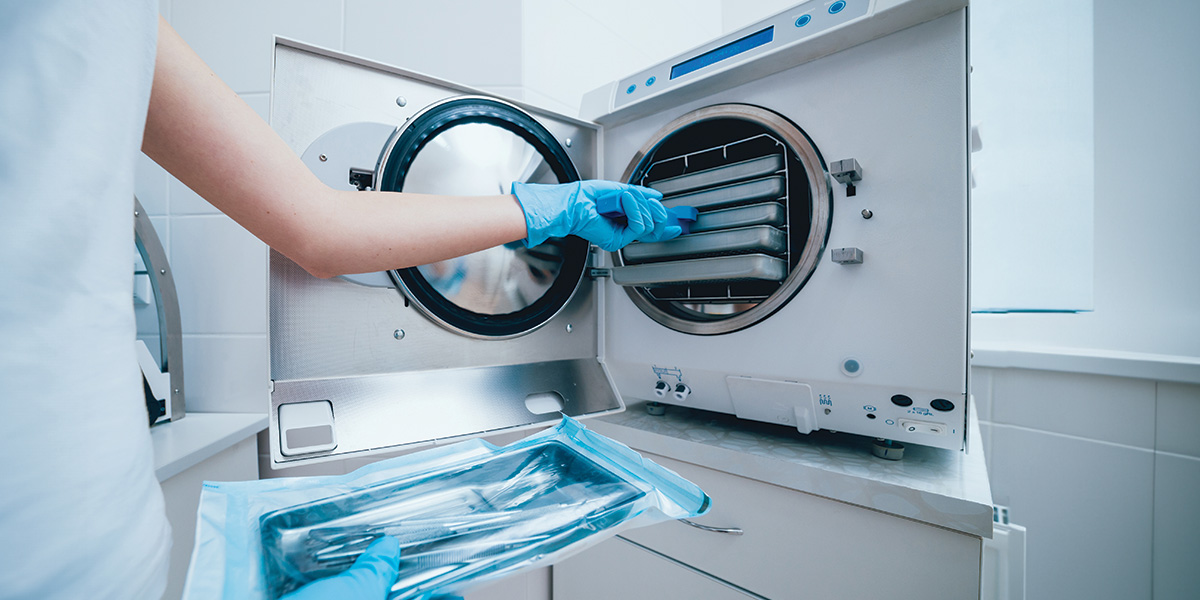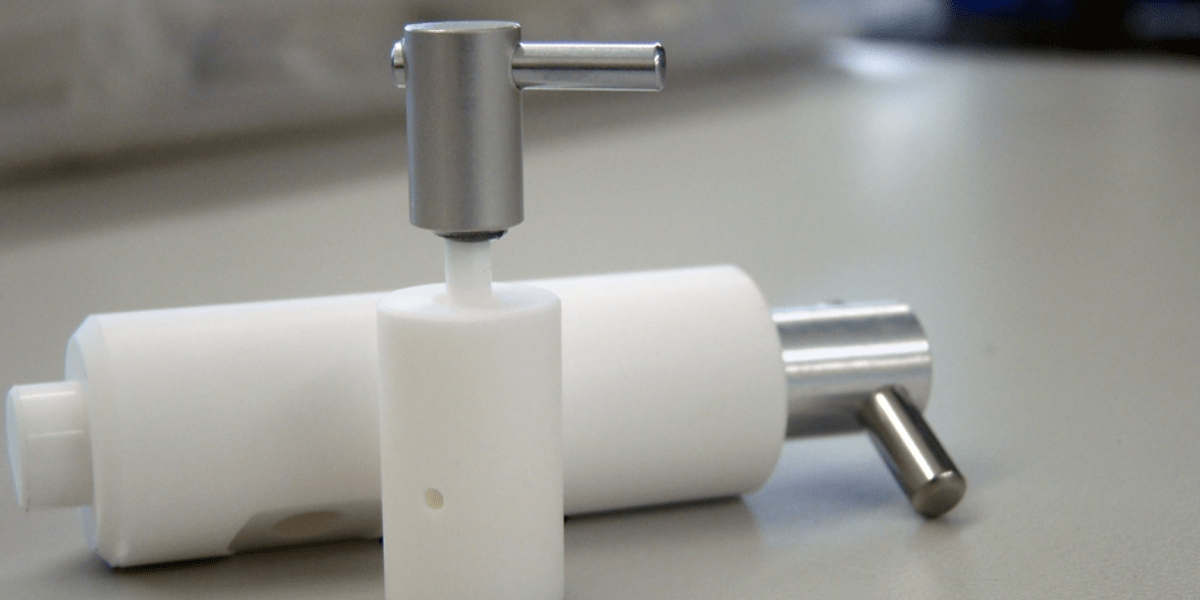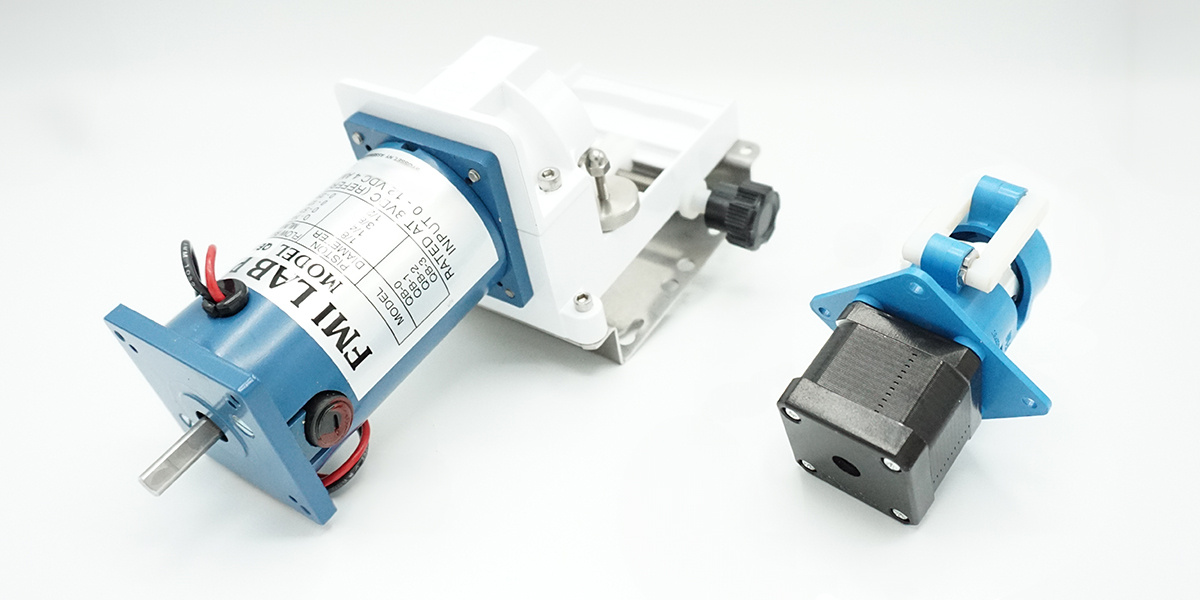Pumping Highly Concentrated Cleaning Solutions Through Disinfection and Sterilization Equipment
Key Takeaways: Fluid Metering’s chemically compatible pumps for disinfection systems handle aggressive agents like hydrogen peroxide and peracetic...
2 min read
Colin Rademacher : 2/22/24 7:00 AM

As a mechanical engineer working in the manufacturing industry, you may come across the term "monomer dispensing" while working on projects related to contact lens manufacturing. In this blog, we will discuss what monomer dispensing is and why it is important, as well as guide you in selecting a piston pump for designing a monomer dispensing system.
What is Monomer Dispensing?
Monomer dispensing is a critical process in the manufacturing of contact lenses, requiring precise and accurate dispensing of liquid monomer into molds.
Why is Monomer Dispensing Important in Contact Lens Manufacturing?
The accuracy and precision provided by the fluidic pump is significant to the manufacturing process since it determines the quality and consistency of the contact lenses produced. If the amount of monomer dispensed is not accurate, it can lead to lenses that are too thick, too thin, or have inconsistent properties.
These inaccuracies can affect both the consumers and manufacturers.
Selecting a Piston Pump for Monomer Dispensing
When selecting a piston pump for monomer dispensing, several factors need to be considered; including flow rate, flow coefficient (Cv/Kv), dispense volume, material compatibility, maintenance requirements, and cost.
The flow rate of the piston pump should match the required flow rate for the monomer dispensing system. According to industry standards, the required accuracy for monomer dispensing in contact lens manufacturing is ±0.5%. These systems are designed to consistently dispense small volumes of liquid ranging from 5 to 20 milliliters.
The fluidic pump should be made from materials that are compatible with the monomer being dispensed to avoid any chemical reactions that could affect the quality of the contact lenses produced. Determining the material compatibility early in the prototyping process will be important for the system to operate efficiently and effectively over time. This will also allow the system to be easily maintained, reducing the risk of unexpected downtime and saving costs on time lost.
Growing Demand for Contact Lenses
The demand for contact lenses is growing steadily, with more people opting for contact lenses over traditional eyeglasses. According to a report by Grand View Research, the global contact lenses market size was valued at USD 10.8 billion in 2020 and is expected to grow at a compound annual growth rate (CAGR) of 5.3% from 2021 to 2028. This growth is being driven by factors such as increasing prevalence of vision disorders, rising awareness about the benefits of contact lenses, and technological advancements in the manufacturing of contact lenses.
In conclusion, monomer dispensing is essential for the production of high-quality contact lenses. A carefully designed monomer dispensing system with a valveless piston pump can ensure that the process is efficient, consistent, and cost-effective. As the demand for contact lenses continues to grow, the need for reliable and efficient monomer dispensing systems will also increase, creating exciting opportunities for engineers to develop innovative solutions.
Our team of experts are standing by to provide you with the technical support for your next project. Contact us today to discuss your requirements and learn how we can be a helpful hand in developing your next-generation application.

Key Takeaways: Fluid Metering’s chemically compatible pumps for disinfection systems handle aggressive agents like hydrogen peroxide and peracetic...

Key Takeaways: Fluid Metering’s low-maintenance microfluidic pumps for lab automation deliver long-term precision with minimal wear, thanks to a...

Key Takeaways: For motor control in fluidic pump systems, selecting between stepper and DC motors impacts flow precision, torque, and...